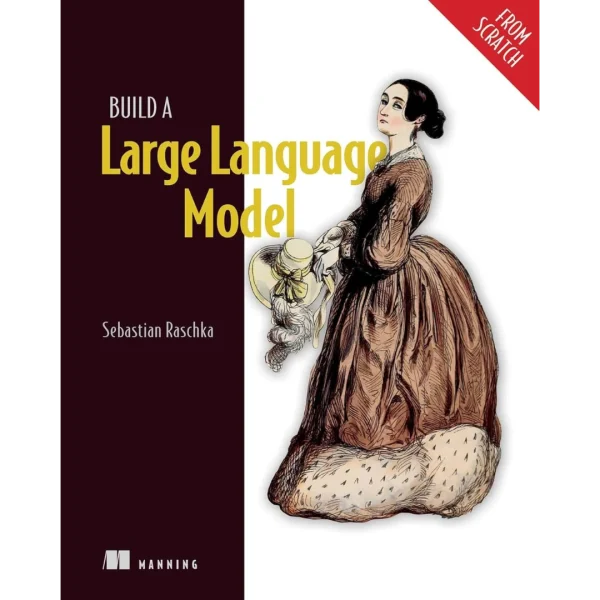
Build a Large Language Model (From Scratch)
Original price was: $299.99.$27.99Current price is: $27.99.
(77 Video: 8 Hours 12 Minutes • 1 Book: Pages: 370)
Build a Large Language Model (From Scratch): Masterclass Bundle
Book + Video Course by Sebastian Raschka
Unlock the Secrets of Generative AI—From Foundations to Fine-Tuning
Take a leap into the world of artificial intelligence with this in-depth bundle, combining the groundbreaking book “Build a Large Language Model (From Scratch)” with its companion video course, both led by renowned AI expert and bestselling author Sebastian Raschka. Designed for learners and professionals alike, this comprehensive package demystifies the inner workings of large language models (LLMs) and empowers you to build, train, and customize your own, step-by-step.
Bundle Includes:
-
Digital Book:
Build a Large Language Model (From Scratch): Learn how to create, train, and tweak large language models (LLMs) by building one from the ground up!
(Includes free PDF & ePub) -
Full Video Course:
Build a Large Language Model from Scratch Video Edition
(8+ hours of high-quality instruction, O’Reilly early access)
What You’ll Learn
This hands-on bundle covers:
- LLM Fundamentals: Understand the architecture and inner workings of generative AI models like GPT.
- Coding from Zero: Write all essential components of a GPT-style LLM—no black-box libraries required.
- Data Preparation: Learn proven, practical techniques for structuring and managing large text datasets.
- Pretraining and Fine-Tuning: Train your base model, then specialize it for classification or instruction-following.
- Evaluation & Human Feedback: Apply best practices for testing and refining your models with real data and user input.
- Cutting-edge Techniques: Explore advanced methods like LoRA (Low-Rank Adaptation) for efficient fine-tuning and leverage pretrained weights from industry sources.
- Practical Applications: Develop chatbots, text classifiers, and custom AI assistants—easily deployable on a modern laptop.
Who This Bundle Is For
Ideal for intermediate Python users and aspiring machine learning engineers, this bundle is perfect for:
- AI professionals and researchers seeking hands-on LLM experience
- Developers looking to break into natural language processing
- Data scientists desiring a deep, practical understanding of transformers and GPT architectures
- Anyone curious about the technology behind ChatGPT, Bard, and Copilot
Why Choose This Bundle?
- Step-by-Step Guidance: Clear explanations, diagrams, source code, and practical examples walk you through every critical stage—from preprocessing and tokenization to fine-tuning and evaluation.
- Theory + Practice: Complement the detailed, readable textbook with engaging video lectures for a richer learning experience.
- Direct from the Expert: Your instructor, Sebastian Raschka, is a recognized authority in AI, an open-source contributor, and Staff Research Engineer at Lightning AI.
- Ready to Use: Build models that run efficiently—even without specialized hardware.
Bundle Contents
-
Book Chapters & Course Modules Cover:
- LLM basics, applications, and architecture
- Tokenization, embeddings, and attention mechanisms
- Assembling a GPT-like model from the ground up
- Pretraining on unlabeled data
- Fine-tuning for specific tasks (e.g., text classification, instruction following)
- Loading and saving PyTorch models
- Performance optimizations: gradient clipping, cosine decay, and more
- Advanced fine-tuning with LoRA
-
Bonus Resources:
- Practical code samples, exercises, and solutions
- References for further reading and continued learning
Supercharge Your AI Skills
Whether you’re building your first AI model or advancing your understanding of cutting-edge generative technologies, the “Build a Large Language Model (From Scratch): Masterclass Bundle” is your definitive pathway to mastery. Gain the confidence and skills to create your own LLMs—and truly understand them from the inside out.
Get the bundle today and join the next generation of AI innovators.
76 reviews for Build a Large Language Model (From Scratch)
You must be logged in to post a review.

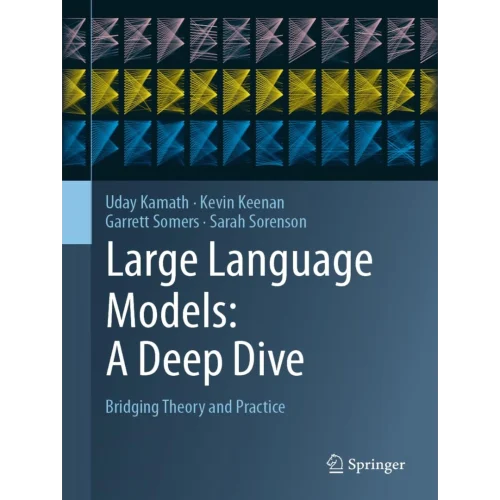
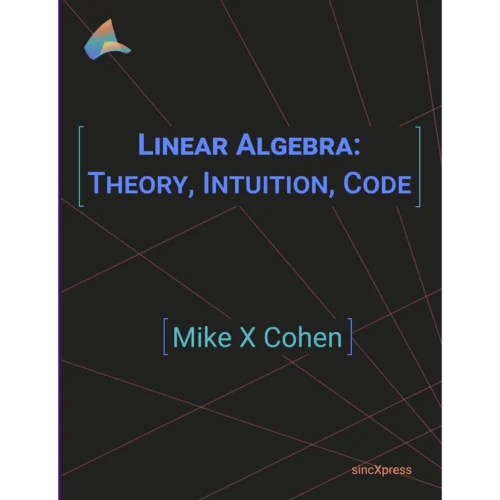
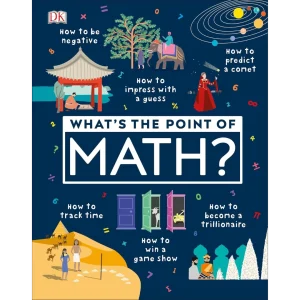
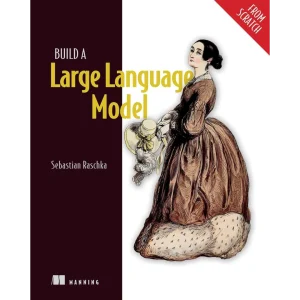




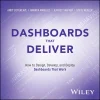
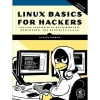
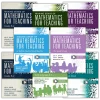
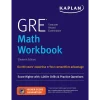



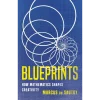



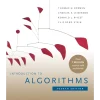
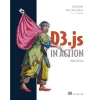
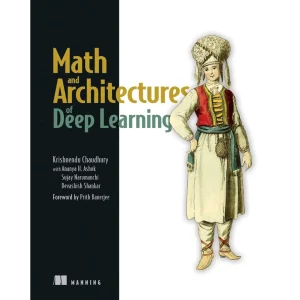

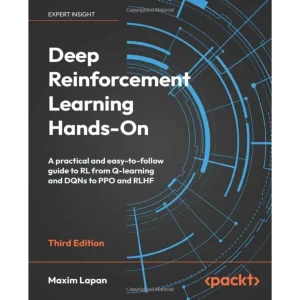
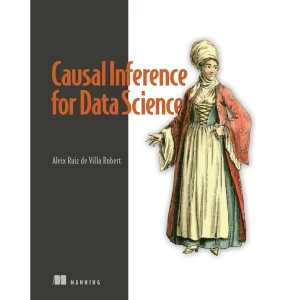




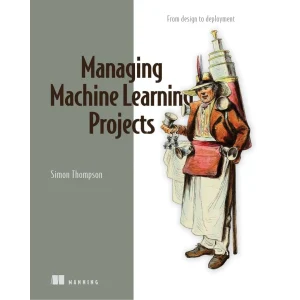


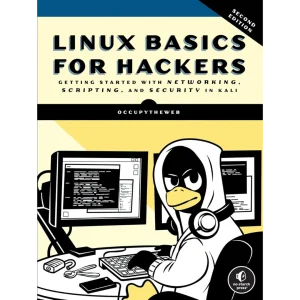
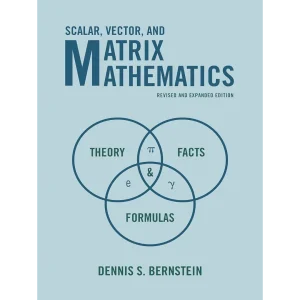
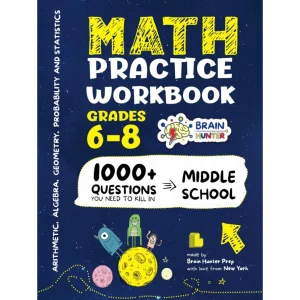


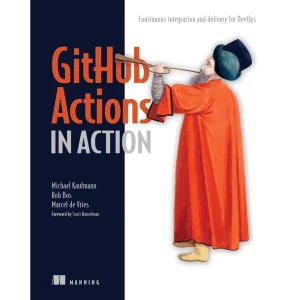

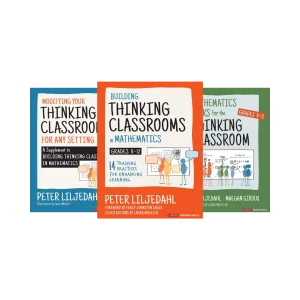



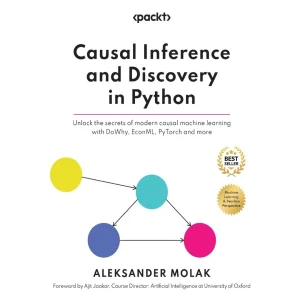
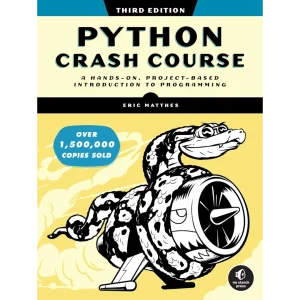


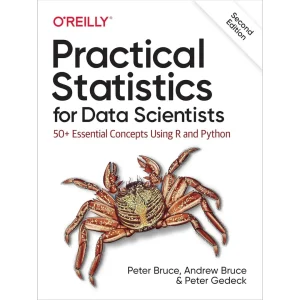


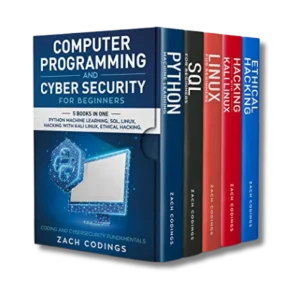



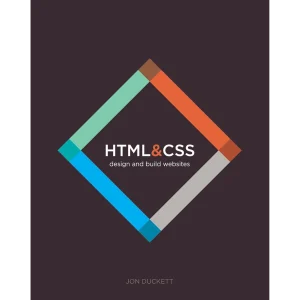





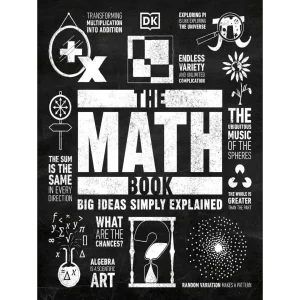
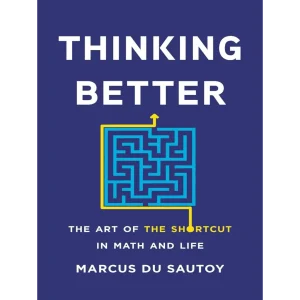

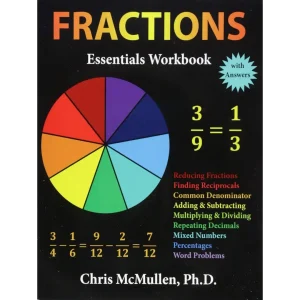
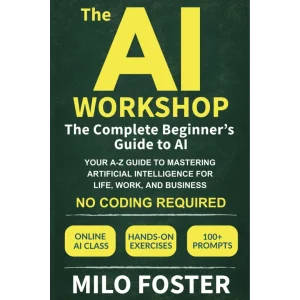


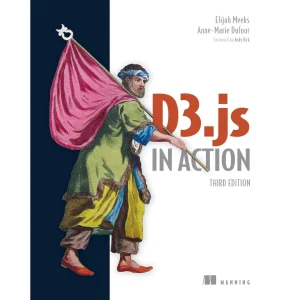

Suman Debnath (verified owner) –
An exceptional resource for diving into the world of Large Language Models (LLMs)! I picked up this book to deepen my understanding of embeddings, and the material has been invaluable for my presentations at various conferences. Every time I share these concepts, there’s a genuine “Wow” reaction from the audience. The way Sebi distills complex ideas without overwhelming the reader is truly remarkable. His insight into how students learn and think makes this book a standout.
If you’re interested in getting started with LLMs and want to peek inside the “black box” of how these models work, I highly recommend reading this book cover to cover—and coding along! Though I haven’t yet completed it, each chapter has already enriched my knowledge tremendously.
For anyone serious about understanding LLMs, pair this book with Simon’s *Understanding Deep Learning.* Completing these two with the hands-on exercises will give you a solid foundation to consider yourself a knowledgeable, well-rounded ML engineer.
Malc (verified owner) –
I really enjoyed this book and the idea of from scratch makes a lot of sense. I found a Discord study group and we parsed out weekly segments. Great ot have these discussions. I would say the only caution I have is information may go out of date as this field moves so fast. But it doesn’t really mater since the idea is to get the basic concepts and deep understanding of th technology. I don’t think yu would every build a genAI from scrathc but knowing how the engine works is really a great mental model to have. Especially when explain it to others within the organization.
Jonathan Reeves (verified owner) –
This book is a great resource for anyone that wants an inside glimpse of the black box that is an LLM. Everyone that has ever used something ChatGPT or Google’s Gemini that is curious about how these tools work internally need to get this book. It will teach you about the inner workings of what makes a great LLM and how you can learn to make your own for all use cases.
GKPass (verified owner) –
The author has written an excellent guidebook that shows how to navigate LLMs’ twists and turns. He explains things in an easy-to-understand step-by-step manner. It is not a manual telling you to do this and that but explains what is happening inside. The knowledge imparted will build a strong foundation for working with LLMs. I believe it is a must-read book for anyone who wants to know how things work.
Hawar (verified owner) –
The best technical book I’ve read. It explains every single step very clearly and shows how they fit into the bigger picture. It took my understanding of LLMs to a whole new level.
eb_canada (verified owner) –
The AI landscape is evolving quickly, and the opportunity to build and deeply understand a language model from the ground up is exciting.
I really like the approach of this book (I have read some parts online and some of the code) because these days when big claims and hype are close to LLMs, exploring architectures, training nuances and getting a hands-on deep understanding is very valuable.
I highly recommend it!
Samir Bajaj (verified owner) –
I subscribe to the author’s newsletter, and I had been waiting for this book to be published since the day it was announced on the mailing list. And it did not disappoint! I prefer to learn by looking inside a system (as opposed to [only] reading about high-level concepts) — so this book and the accompanying code was exactly what I needed.
My only suggestion to the author: please include material related to DPO/RLHF in the second edition.
Blake Johnson (verified owner) –
Can’t recommend this book enough for someone trying to understand LLMs. The buildup chapter by chapter is exactly the right pace and it goes deep and includes code for everything.
Gabe Rigall (verified owner) –
BLUF: If you want to learn the inner workings of an LLM, buy this book.
PROS:
– An absolute master class from a leading expert in the field
– Step-by-step instructions leave little to the imagination
– Covers text prediction AND generation techniques
– Appendices are filled with helpful references to assist the reader with foundational knowledge
CONS:
– None that I can think of
DISCUSSION POINTS:
– Reliance on an active internet connection (to get packages, models, and/or datasets) would make LLM-from-scratch implementation difficult on a secure network/intranet
syed (verified owner) –
I read this book from my Orielly subscription. I have read this book from start to end. I love the structure and organization of topics. The details are immaculate. This book is an ultimate starter pack for someone who want to learn about LLM architecture.
Waqar Sheikh (verified owner) –
Very easy to follow, the diagrams and explanations are great. Does not go into mathematical details.
SA (verified owner) –
“Build a Large Language Model (From Scratch)” is an invaluable resource for anyone looking to understand the inner workings of LLMs, specifically transformer-based models like GPT. The comprehensive, step-by-step approach to building, pretraining, and fine-tuning LLMs makes it a suitable guide for practitioners and researchers who want to gain a deep understanding of these models.
Strengths
1. Step-by-Step Guidance: The book’s structure is highly systematic, starting with fundamental concepts and gradually moving to advanced topics. This makes it suitable for both beginners and experienced readers.
2. Hands-On Implementation: Every concept is accompanied by practical coding examples, which are crucial for understanding the implementation details of LLMs.
3. Comprehensive Coverage: Raschka does not just stop at explaining how to build an LLM but also explores how to adapt it for various real-world tasks, making the book a one-stop resource for LLM enthusiasts.
Considerations
1. Technical Depth: While the book is highly informative, it does assume a solid background in Python and some familiarity with machine learning and deep learning concepts. Readers who are completely new to these fields may need to supplement their learning with other foundational resources.
2. Focus on Transformers: The book mainly focuses on transformer-based LLMs like GPT, which means it might not delve deeply into other architectures that are also relevant in NLP.
Maitreyee Mhasakar (verified owner) –
This is a great book for anyone wanting to learn LLMs’ internal workings. The book explains the LLM and role of significant components of LLMs in appropriate detail which helps understand the data flow of an input and how the LLM generates the output. The book contains great visual illustrations that make underlying core technical concepts easy to understand. I like the hands-on implementations in the book. I especially liked the PyTorch section. It is concise and gives the right amount of introduction and information needed about the library to be used in the exercises in the book. Highly recommend.
Adam Wan (verified owner) –
It is an excellent try to strike a balance of theory and practical part of a LLM. It provides you the very basic foundation of how LLM looks like and a hand on experience to build a simplified LLM.
It is one of the best introductory to me explaining the relationship between foundation model, pertaining, fine-tuning, transformer architecture.
And gain the hand on experience let me understand the bottleneck and hard part of the LLM models either.
Anton P. (verified owner) –
The book content is a perfect match to the title. It guides through the data prep, training, and evaluation, and includes exercises with solutions.
It has a balanced composition of illustrative diagrams (34%, I particularly like these visuals), code (33%), and text (33%, or even less). The content includes practical tips such as training times per epoch on different hardware setups.
The book is surprisingly concise: the author avoided going sideways of historical context, numerous model architectures, etc. which would blow up the book volume by 10x.
For those of us interacting with LLMs through APIs, the book is still valuable: it provides a solid introduction to fundamentals like tokens and the process of LLMs training. This aids in prompt engineering and choosing an appropriate use case for generative AI applications.
Stephan Miller (verified owner) –
Though I don’t think I be building my own LLM any time soon, it does help to know how they work when you deal with them. Some of the quirks and unexpected responses start to make more sense. I have worked with classification and deep learning before, but LLMs were a black box to me. Now, at least, I have a clearer idea of what they do and actually keep up how the technology is changing.
Lee Drake (verified owner) –
If you are thinking about working with LLMs, this book is an excellent starting point. It is extremely code heavy, but don’t be dissuaded because the code is necessary to understand how LLMs work. The focus on making sure you can follow along means you can do everything in the book on your own laptop.
Ugochukwu Onyeka (verified owner) –
When Sebastian Raschka, PhD, notified us in his newsletter/email that he was writing this book, I think I was one of the first people to buy it while it was in its MEAP, Manning Publications Co.’s Early Access Program. The book did not disappoint at all. This book is a masterpiece. It does what it promises: to teach you how to build an LLM from Scratch, and it does it perfectly well.
Do I have a favourite chapter? NO!! All the chapters in this book are rich in detail, so you can’t skip any of them. It’s the kind of book where every word carries significance, and you might miss important information if you blink.
If you want to understand how PyTorch fits into the LLM training workflow, Sebastian has a whole section devoted to this in the book. Other parts of the book like the section on PEFT/LoRA are very rich and will help enhance your knowledge of LLMs.
My only complaint is that the book stayed long in MEAP but I guess it’s because of the quality that Sebastian built into it.
My recommendation? Buy this book. The book is 101% worth it.
Mash Zahid (verified owner) –
If the best way to learn something is to teach it, then a group of scrappy techies, developers and strategy consultants got together for a weekly study group around this excellent book by Dr Sebastian Raschka.
Dr Raschka has clearly put in significant effort to produce a comprehensive base of knowledge to understand LLMs from an engineer’s perspective, taking you through the entire process of building from the ground up, providing clear explanations, practical examples, and, most importantly, Python code with accompanying repo to learn hands on. The exercises and projects included throughout the text allow you to apply what you’ve learned in real-world scenarios, which was incredibly helpful for solidifying our understanding of the material. Working through the chapter exercises reinforce Dr. Raschka’s commitment to making complex topics accessible.
Overall, I cannot recommend this book highly enough. If you’re serious about building your expertise in AI, then this is a must-have on your desk shelf. Thank you, Dr. Raschka, for providing such an informative and engaging resource for so many of us practitioners!
Zadid (verified owner) –
Sebastian wrote this book perfectly. His explanations are very simple, easy to understand but covers the topic comprehensively. I have not found any other authors writing on AI topics in so simple words. This is definitely the best book to start working on LLM.
Aniruddha Chattopadhyay (verified owner) –
Would highly recommend all the engineers (even if you are not a hardcore AI/ML guy) to get this book and go through it. It takes you through one of the most revolutionary technologies of our time – the transformer architecture and helps you build intuition around how LLM chatbots like chatgpt claude etc work under the hood.
elossio (verified owner) –
I am very impressed with the quality of this work and the level of details, in a sequential and didactic way, that the author delivers to the reader who is enthusiastic about technologies. My thanks for the creation, for the excellence, for the care in the development of a very rich material that is already part of my collection!
Swapnil (verified owner) –
Amazing read so far. Club this with the GitHub repo and Youtube tutorials for hands on and you’re all set.
Uday Krishna Kamath (verified owner) –
First, I am an author of a LLM Book myself, and I know what it takes to write a good comprehensive book. I have been a fan of Sebastian Raschka from the ML-Python book he wrote. This is an excellent book for someone to learn the basics of LLMs from scratch to go over the entire life-cycle by building layer-by-layer transformers, playing around with attention mechanisms, pre-training pipelines, fine-tuning for the most crucial application of NLP- classification, fine-tuning to follow instruction tuning as a comprehensive way to use the LLMs. I loved the scattered practical tidbits, but most importantly, in Appendix D and E. I heavily recommend this book to every researcher or ML engineer who wants to learn by coding and building things from scratch! Thanks for this, and take a bow, Sebastian!
Maxim oberemchenko (verified owner) –
really useful
bboy monk (verified owner) –
Recommend this book! It’s well structured in a llm development llifecycle. Format is nicely done giving me willing to read the book. Contents are easy to understand and also includes all the details in certain degree of depth.
Manjunath Janardhan (verified owner) –
Sebastian Raschka’s latest book is an absolute treasure for anyone serious about understanding the intricacies of Large Language Models (LLMs) and Transformer architecture. What sets this book apart is its unparalleled hands-on, ground-up approach to building GPT-2 from scratch using PyTorch.
Why This Book Stands Out
1.Comprehensive Deep Dive: Raschka doesn’t just explain concepts; he walks you through building each component of the Transformer architecture step by step. It’s like having a masterclass in LLM design right at your fingertips.
2.Beginner-Friendly Design: Don’t worry if you’re not a PyTorch expert. The brilliantly crafted Appendix A provides a thorough introduction to PyTorch, making the learning curve much less intimidating for newcomers.
3.Beyond Basic Architecture: This book goes well beyond a simple explanation of Transformers. It covers fine-tuning techniques for classification and instruction tasks, and even includes a remarkable appendix on LoRA implementation from scratch.
Practical Learning Experience
The book is packed with practical exercises that challenge and reinforce your understanding. Raschka provides a learning experience that’s both rigorous and engaging. Whether you’re a machine learning practitioner, researcher, or enthusiastic learner, you’ll find immense value in the detailed explanations and hands-on coding.
Standout Features
1.Detailed, step-by-step implementation of GPT-2
2.In-depth exploration of Transformer architecture
3.Comprehensive coverage of fine-tuning techniques
4.Practical exercises to test and expand your knowledge
5.Appendices that provide additional context and learning resources
Recommended For
Machine Learning Engineers
AI Researchers
Data Scientists
Students in Computer Science and AI
Anyone wanting to understand LLMs at a fundamental level
Pro Tip
If you’re new to the subject, start with Appendix A to build your PyTorch foundation, then progress through the chapters systematically. The book’s structure allows for a smooth, progressive learning experience.
Final Thoughts
Sebastian Raschka has created more than just a book—he’s crafted a comprehensive guide that demystifies the complex world of Large Language Models. The hands-on approach, coupled with deep technical insights, makes this book an invaluable resource for anyone serious about understanding modern AI technologies.
Whether you want to build your own models, understand the inner workings of LLMs, or simply satisfy your technical curiosity, “Build Large Language Models From Scratch” is an exceptional investment in your learning journey.
Highly recommended!
TanelP (verified owner) –
This book was perfect for me. I’m a computer performance specialist, but haven’t yet gotten serious about ML and language models. I’ve read occasional overview articles, so have an idea what things like “vectors” and “matrix multiplication” are, but I didn’t see the full picture. I had bought some other machine learning books before that tried to cover everything about everything and never got even half-way through reading them. This book covers not only the practical examples (and source code) with all the steps for training your own toy language models (Python/pytorch code), but also it explained how all the training layers work together in unison. On the training architecture topic, this book did a better job in a handful of pages than all the deep papers I had read in the past, so I should probably have started from this book, not the other way around.
Also, the book does a good job incrementally building the knowledge by adding a new layer after another as you progress through the book. Highly recommended!
Scott Guthery (verified owner) –
Clearly written with flow diagrams and code samples tightly coupled to the text so you can follow along three ways. No hand-waving or buzzwords or I’m-smarter-than-you. The author knows his stuff, and you’ll know it too when you finish the book. The chapters are stand-alone, so you can immediately jump to what you want to know about. This makes the book as much a reference book as a how-to book. And the best part of all is that, unlike much Python code floating around in open source space, the code for this book works out of the box. Kudos to the author.
Ruben (verified owner) –
Easy to read and easy to follow examples
Caron Zhang (verified owner) –
Finished the book in a week, with side by side execution of its accompanying GitHub repo.
The theory part always has intuitive examples to first grasp the high-level picture, then the coding part explains the nuances of building the LLM network. Each chapter comes with several exercise questions, which requires changing a bit of code, which I found very useful, because doing the actual code changes reinforces the topics I just read and made my understanding more solid.
The GitHub code not only has Jupyter notebooks, but it also comes with a consolidated file like `gpt_train.py` with all the classes and functions defined, so that you can directly execute, or change several lines and make it your own recipe.
Highly recommend!
SL (verified owner) –
As an AI/ML professional I found this book to be fairly easy to read and understand the inner workings of Large Language models with exposure to technical concepts that I could tie back to my work.
I’d highly recommend this book for anyone wanting to learn more about Large Language Models and get hands on experience developing one from scratch using Python.
BRIAN (verified owner) –
What an amazing book detailing how each component of the language models components fit together and work synchronously. It is not too difficult to read / follow along if you have previous coding experience with Neural Networks and PyTorch on Machine learning projects. It definitely was a great purchase to understand what it takes to build a local LLM. I had to remove 1 star because the book already tore a bit on the front cover on day 3 of reading.
luc beeusaert (verified owner) –
Zeer goed om zelf je eerste LLM te leren maken.
Juan David Ospina Arango (verified owner) –
I really, really enjoyed the book. I feel the content valuable, practical and fun. It’s a book to keep close and to play with.
Pacharu (verified owner) –
Wonderful book , Generative AI in Action is a fantastic resource for anyone looking to explore the cutting-edge field of AI. It simplifies complex topics of AI, Enterprise wide usage and how to build from group up to large scale applications, at the same time providing practical, hands-on code samples. Perfect for of all skill levels, this book offers a solid mix of theory and real-world applications. Highly recommended!
Dennis Davis (verified owner) –
I’m still reading the book, and completed coding everything in Chapter 2. So far the approach of breaking down the concepts into fundamental parts and then showing how those parts are built into more complex implementations – that can then be better understood because of the author’s presentation is perfect for how I learn.
For the benefit of others with NVIDIA GPU configuring CUDA:
1 Find the CUDA support level of your GPU – on Windows NVIDIA Control Panel -> System Information(at the bottom) -> Components tab – installed driver software SUPPORT LEVEL is listed – Not the actual software!
2 Install MS Visual Studio (2022) Needed by NVIDIA CUDA software
3 Install the version of the NVIDIA CUDA software supported by info from step 1 AND PyTorch (for example my HW supported CUDA up to 12.7, but PyTorch software support tops out at 12.4 (as of today 1/13/2025), so I went with 12.4 NVIDIA CUDA software.
4. During the driver custom install (not the default simplified install) deselect NVIDIA GeForce Experience – caused errors for me
5. Reboot after NVIDIA CUDA software installation
6. On the NVIDIA CUDA installation page there are deviceQuery and bandwidthTest exe’s that will validate the CUDA HW/SW interface is functioning
7. Run the PyTorch installer – I use Anaconda environment- so ran the conda install command coped from the PyTorch installation web page (shown in the book), from a command line inside my conda target environment – restart anaconda, I use vs code restarted both when the install was completed
8. On the NVIDIA CUDA installation page it states to install – conda install cuda -c nvidia to the conda target environment – when the book says run – torch.cuda.is_available() it should return True
I don’t consider this a defect of the book – there is already enough hand-holding by the author – imho some work still needs to be done by the reader!!
So far getting a great appreciation/comprehension about what is behind Large Lanquage Models – Thank You!!
Rathi (verified owner) –
Fantastic book for a beginner. Attention mechanism and other complex constructs explained in an easy to understand illustrated manner without dumbing down too much. Special mention to the prod ready code that comes with the book. Best book till date on LLMs.
Gautam Galada (verified owner) –
This book showcases the theoretical and practical constructs of LLM, tbh I finished this book within 10 days. If you really like building LLMs (want to but do not know how to), this is a must buy; (worth every penny). Especially the exercises and appendix (GitHub repo too).
Fabio (verified owner) –
Fui direto a parte em que estava precisando compreender e fiquei surpreso com a didática do autor ao abordar o tema.
Continuo no estudo e gostando muito da leitura.
VINAYAK G. (verified owner) –
Excellent book with an in depth explanation of difficult components of LLM. A good resource for hands on Pytorch and implementing LLMs from scratch.
Howard W (verified owner) –
I thoroughly enjoyed this book. It’s an excellent resource for learning about LLMs from the ground up. The textbook breaks down complex concepts into fundamental principles, making it ideal for both beginners and those looking to deepen their understanding of the latest techniques in the field. Whether you’re starting from scratch or aiming to refine your knowledge, this book offers a comprehensive, step-by-step approach to mastering LLMs
Brett G Fitzgerald (verified owner) –
I just completed this book, and it’s an exceptional resource for anyone interested in understanding how Large Language Models work from the inside out. It goes from basic tokenization all the way through to fine-tuning, with every step carefully explained and demonstrated through practical code.
Amazingly, I did all the programming work on my fairly underpowered laptop. I don’t have a GPU or any great hardware. Some of the training models took a bit to execute (20 minutes at the longest), but they were definitely possible, and only a few of the examples needed this level of processing power.
The progression is well-structured, starting with fundamental concepts like tokenization and vocabulary building, then gradually moving into more complex topics like model training and fine-tuning. The code examples are clear and educational, and while you can copy them directly, I found typing them out helped reinforce the concepts (though the author provides all code on GitHub for reference).
When dealing with advanced topics, the explanations remain clear and approachable. The supplementary exercises (which I wish I had done more of) provide excellent opportunities for deeper learning and experimentation.
While the material can be challenging at times, that’s the nature of the subject matter rather than a fault of the book. Dr. Raschka’s writing style keeps you engaged throughout, and his expertise shines through in how he anticipates and addresses common points of confusion.
Whether you’re an AI hobbyist, a student, or a professional developer looking to understand LLMs at a deeper level, this book provides an invaluable foundation. It’s not just about following instructions – it’s about truly understanding how modern AI systems work from the ground up.
Highly recommended for anyone who wants to go beyond using LLMs to actually understanding and building them.
Alessio Chiovelli (verified owner) –
Still reading it, but i’ve seen really good feedbacks from linkedin, and they were not wrong! Clearly expressed, and the concepts are easily explained. Looking forward to read all the chapters!
Sridhar Srinivasan (verified owner) –
“𝐁𝐮𝐢𝐥𝐝 𝐚 𝐋𝐚𝐫𝐠𝐞 𝐋𝐚𝐧𝐠𝐮𝐚𝐠𝐞 𝐌𝐨𝐝𝐞𝐥 (𝐅𝐫𝐨𝐦 𝐒𝐜𝐫𝐚𝐭𝐜𝐡)” – An ABSOLUTE must-have for those who have a “how-things-work?” mindset. The flow of the book from data preparation through fine-tuning is awesome. Better to have a quick refresher on the PyTorch before delving into the chapters.
Omid B. (verified owner) –
The book dives deep into the fascinating world of language models, walking you through every step—from designing and coding components to training and fine-tuning models for specialized tasks. What stood out most to me is its practical, hands-on approach, breaking down complex ideas into something manageable—even for those experimenting on a personal laptop. 💻
I highly recommend this read.
Mr Mike (verified owner) –
I worked with AI including a patent for Bayesian based diagnostics. This is very thorough and provides a good evaluation of what it will take to implement a complete LLM package.
Wael Mohsen (verified owner) –
I appreciated the book for its thoroughness and attention to detail. However, I believe it would benefit from being printed in color, as many images on the O’Reilly website are more vibrant and clearer when viewed in color. Additionally, enhancing the resolution of some images would improve the overall experience. For these reasons, I would rate the book 4 out of 5. With these adjustments, I think it could easily earn a perfect score of 5 out of 5.
Amith Aadiraju (verified owner) –
Sebastian is the guy if you are serious about learning true “inner-workings” of LLMs, I was a complete novice to even RNN attention mechanism before this book, now I’m pro in Multi headed self attention, thanks to Sebastian. I’ve ready many other books, forget about ML Mastery and related books, nobody explained LLMs with such elegance as Sebastian. Can’t recommend this enough. Will buy all his books going forward !
Edward H. (verified owner) –
Excellent book.
LLMs can seem mysterious, but not after reading this book. It’s well worth the effort to work through the examples.
Sri S. (verified owner) –
Sebastian’s book is not only thorough, but also, well-written and understandable with plenty of code examples, recaps (both pictorially and in text). The notebooks just work as you go through the chapters. This book takes the reader from the very basics of tokenization to how transformers are build stage by stage, how every thing fits together and finally fine-tuning! Prior to reading this book, I had some knowledge, in bits and pieces of a few components of LLMs and a little bit of theory. After reading this book, I now have a very good and clear understanding of LLMs and has given me the confidence to work on post-training activities. This book is a must-have if you want to dive deep.
Manfred Kremer (verified owner) –
This book shows step by step all ingredients which are put together in order to build a GPT-2 model from scratch. All functions are explained explicitely in python, before the equivalent functions of pytorch are used. I really liked to follow the book to the end.
There is also a discussion forum about the book on github, where readers can ask questions, which are promptly answered by the author.
That said, there remain many questions about WHY the method works, and why some steps are made. E.g. why use multihead attention: to my understanding this completely scrambles the embedding vectors, and it is like a miracle that the method works so well. But there were page limits for the book, and and going deeper into this kind of questions would pprobably have doubled the size of the book.
Ann (verified owner) –
Very informative and code is great
Mandana Daraei Fathabad (verified owner) –
well written and easy to understand.
logesh (verified owner) –
One of the best books out there on building LLMs. The author goes to great extent in each explaining each step right from tokenization, BPE, word embeddings to masked multi-head attention and pretraining followed by supervised fine tuning (SFT). There is discussion on parameter efficient fine tuning techniques LORA as well. Each chapter has a nice block diagram that shows both top level and detailed lower level view of how all things fit together. I highly recommend this book for anyone wanting to learn/build/use LLMs.
S. Wang (verified owner) –
The best way to learn something is to build it for yourself, and that is exactly what this book does for LLMs. You can get explanations of how LLMs work from a lot of sites on the Internet. What this book does uniquely (as far as I know) is combine that information with a guide for you to implement it for yourself. If you finish the book and work through the code examples and exercises, you will have a solid and up-to-date understanding of how LLMs work under the hood.
aj (verified owner) –
This text is the premiere introduction for LLMs. Each chapter is carefully constructed with the detail necessary to understand how LLMs actually works behind the hood. The supplemental materials for coding prototypes, extensions, and additional deep dives for enhanced learning are readily available for any practitioner to push further. I highly recommend purchasing this material and keeping an eye of future publications from this author.
John Zoetebier (verified owner) –
In LLMs from Scratch author Sebastian Raschka explains in great detail the components and mathematics behind building an LLM. Step by step you get a better understanding how the different components fit together to create an LLM. Most chapters have corresponding code in a GitHub repository that you can download to your PC. Could run the code on my mini PC with a Ryzen 9 CPU and 32GB RAM without using a GPU.
I found it particular useful for understanding LLM terms like tokenization, embedding vectors, context length, weights, pre-trained weights, training, transformer architecture, inference and fine tuning. Alternating between the book and the Jupyter Notebook works well. The author intermittently shows snippets from the book and corresponding Python code examples.
This is a great way to learn a new subject.
The author walks you through the steps using examples and there is a corresponding Jupyter Notebook in the GitHub repository that you can copy or clone to your PC.
Read a chapter in the book before running the Python code in Jupyter Notebooks. This gives you the background information what the code is about.
There is a README.md markdown file with a useful video about how to setup your Python environment and easy to follow steps to setup your local development environment, how to connect to a Docker Container or connect to a cloud GPU environment. You can do all coding, running and testing on your local PC with Visual Code. It works like magic.
Christoph Kuhn (verified owner) –
Gute begleitende Praxisbeispiele mit Code
Higgs meets Boson (verified owner) –
I’ve bought tons of ML, DE, programming, cloud architecture books, etc…
This book is absolutely fantastic! Especially combined by the current YouTube series published by the author (March 2025).
Sebastian’s Packt books are also excellent but I must say this book stands on its own. This book is extremely well written and clear, builds each component in the Transformer Architecture piece by piece, it makes me feel like I can actually build an LLM on my own.
At a minimum this book will help you understand the Transformer Architecture (Attention Mechanism, Feed Forward, Layer Norm, etc…) rather than importing models from HugginFace and not really know what’s going on in the background.
If you are like me and are not satisfied with just building RAGs/LLM applications without understanding the model architecture, this book is for you!
I’ll keep buying from this author as long as the quality of his content is as good as this.
dioj3828 (verified owner) –
this an excellent book with clear explanations on difficult topics. I want to outline what differentiates this book from similar:
1. No general stuff that is available on every AI related website.
2. Very clear mapping of math to the rationale behind this math.
3. A lot of diagrams showing the mechanics of different operations.
4. A LOT of references to useful academic papers.
5. Great youtube companion videos available.
B. Clarke (verified owner) –
From the steps I have taken so far with this book, it is very valuable for anyone looking to start off with LLMs. Pursuing more information from the book.
Joaquin Prieto (verified owner) –
Great for a deep introduction. A must for the first deep dive into LLMs.
Santosh Shanbhag (verified owner) –
Building your own LLM from scratch seems like a formidable task. Most of us in this field know how to use one, fine tune it, and also use techniques like RAG to provide contextual information to supplement the knowledge base. Sebastian Raschka teaches it step by step in this book. The only pre-requisite is a good working knowledge of Python and high-school math (matrices and vectors). That’s it and you can dive right in.
Whether you intend to build an LLM yourself or not, it doesn’t matter. What matters is that you get a solid understanding of what LLMs are under the hood. There isn’t any other book of this kind that goes into this level of detail.
Wayne (verified owner) –
Perfect book for LLM beginners
Guojun Wang (verified owner) –
Recommend this book! This book tells you many things about a GPT model and can help you understand the code easily.
Benjamin Emanuel (verified owner) –
Excellent Book – really does show how to make a LLM from scratch as the title suggests.
zohreh (verified owner) –
Great book to understand the fundamental of transformers and LLMs.
Pajar Achmad (verified owner) –
Received in good condition
Christian W. (verified owner) –
LLMs sind ein neues Thema für mich. Das Buch finde ich wirklich gut, sauber strukturiert und am Ende versteht man das Thema. Es gibt zusätzliche Videos des Authors, in denen er die Kapitel noch einmal durchgeht und auf github gutes Zusatzmaterial (u.a. Jupyter Notebooks zum Thema).
Adam N. (verified owner) –
Truly great and exceptionally well thought out resource for learning how LLMs work. Don’t even think twice and read it, study the great examples, look up bonus materials and check out accompanying YT videos from S. Raschka. I wish all tech books were at this quality level!
Kishore (verified owner) –
A wonderful guide to master the fundamentals of LLM
Sanjay Basu, PhD (verified owner) –
Finally, A Book That Demystifies the Magic
I’ve read my fair share of machine learning and deep learning books, but Build a Large Language Model (From Scratch) is hands down one of the most practical, insightful, and well-structured guides I’ve come across. If you’ve ever stared at the latest transformer-based models and wondered how to go from raw text to a functioning large language model—this book is your roadmap. What really stood out to me is how the author balances the theoretical underpinnings with hands-on implementation. It’s not just about wiring up some PyTorch modules or tweaking Hugging Face APIs. You’ll actually understand why attention works the way it does, how to architect a tokenizer, what training strategies scale, and where the real bottlenecks in modern LLMs lie. The author doesn’t sugarcoat the complexity involved—but they also don’t drown you in jargon without context. One thing I particularly appreciated: the book doesn’t assume you’re working in a trillion-parameter, hyperscale compute environment. Instead, it shows how to design scalable models and training loops that make the most out of accessible hardware—while still teaching principles that apply to the biggest models in production today.
The code examples are clean, well-commented, and actually runnable (a rare thing, sadly). I was able to get a mini-GPT-style model trained on my own dataset without needing to decode cryptic dependencies or guess what a missing function might be doing. For researchers, engineers, or even curious tinkerers who’ve gone beyond “prompting ChatGPT” and want to build the magic themselves—this book delivers. Whether you’re looking to build an open-source alternative, fine-tune your own domain-specific model, or just gain a deeper appreciation for how these systems work under the hood, this is a fantastic resource.
Highly recommended—and likely to be a dog-eared staple on my shelf for years to come.
Steve (verified owner) –
This review may be pre mature because I’ve only made it through the first two chapters but so far absolutely amazing. The language is perfect. So many concepts that I’ve struggled with for a while are laid out so clearly. I look forward to doing all the exercises and finishing this book But I would just like to thank the author personally because this is a game changer for my understanding of General ML and AI concepts I struggled with in the past.
Isaac Lovelace (verified owner) –
As an Undergraduate in Intelligent Systems Engineering, this book is amazing. definitely had some good points not covered in classes!
kartikeya (verified owner) –
Easily the best technical book on LLMs and the best teacher out there. Sebastian simplifies convoluted topics effortlessly. He is truly a gem. A must buy, 10/10 – can’t recommend it enough! Thanks Sebastian for doing such a wonderful job.